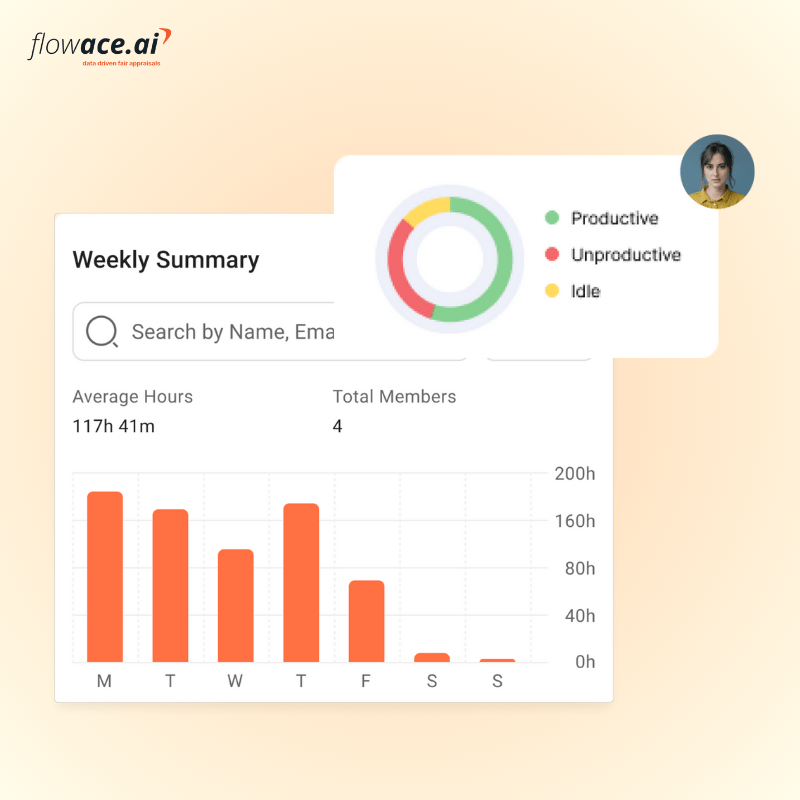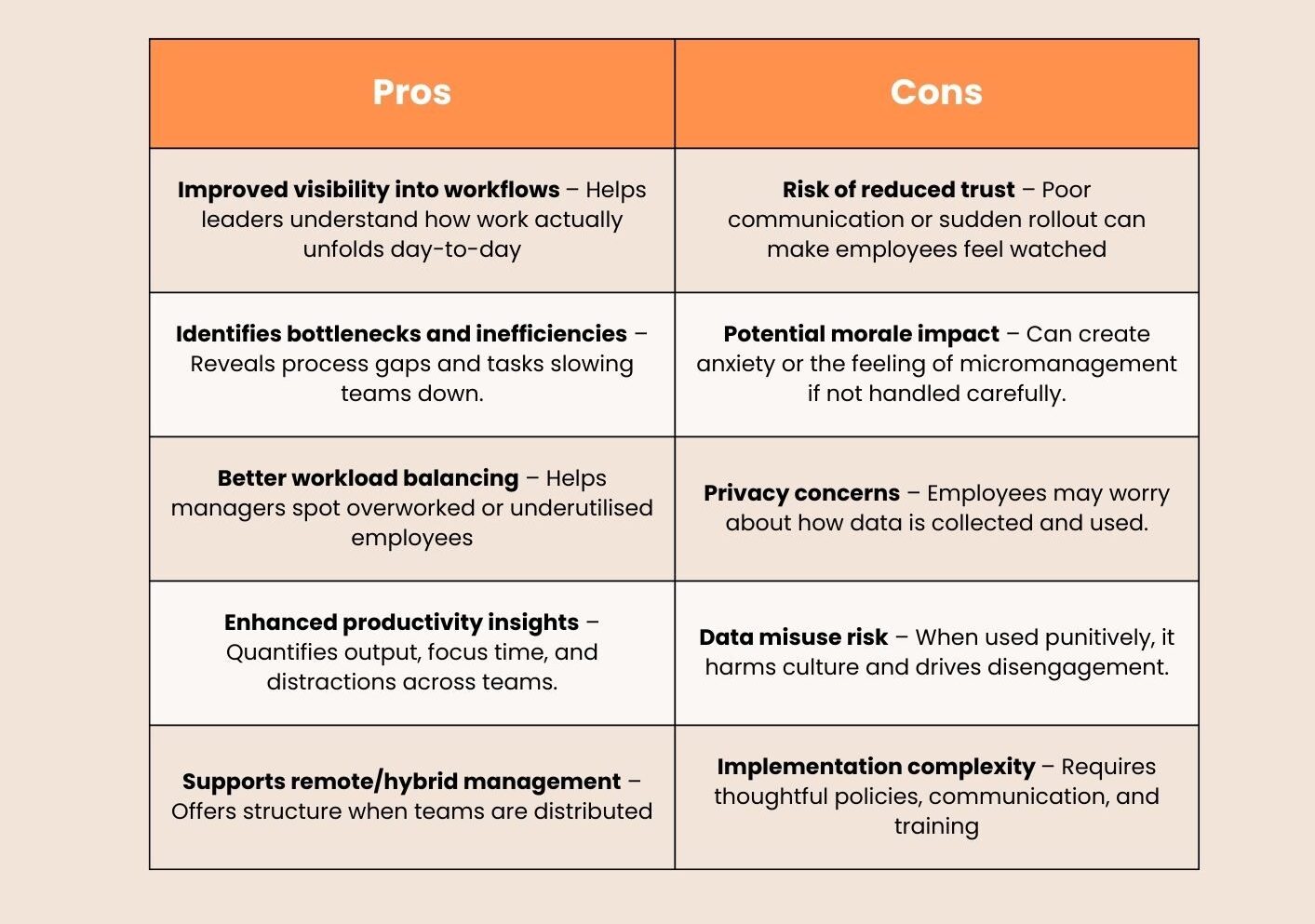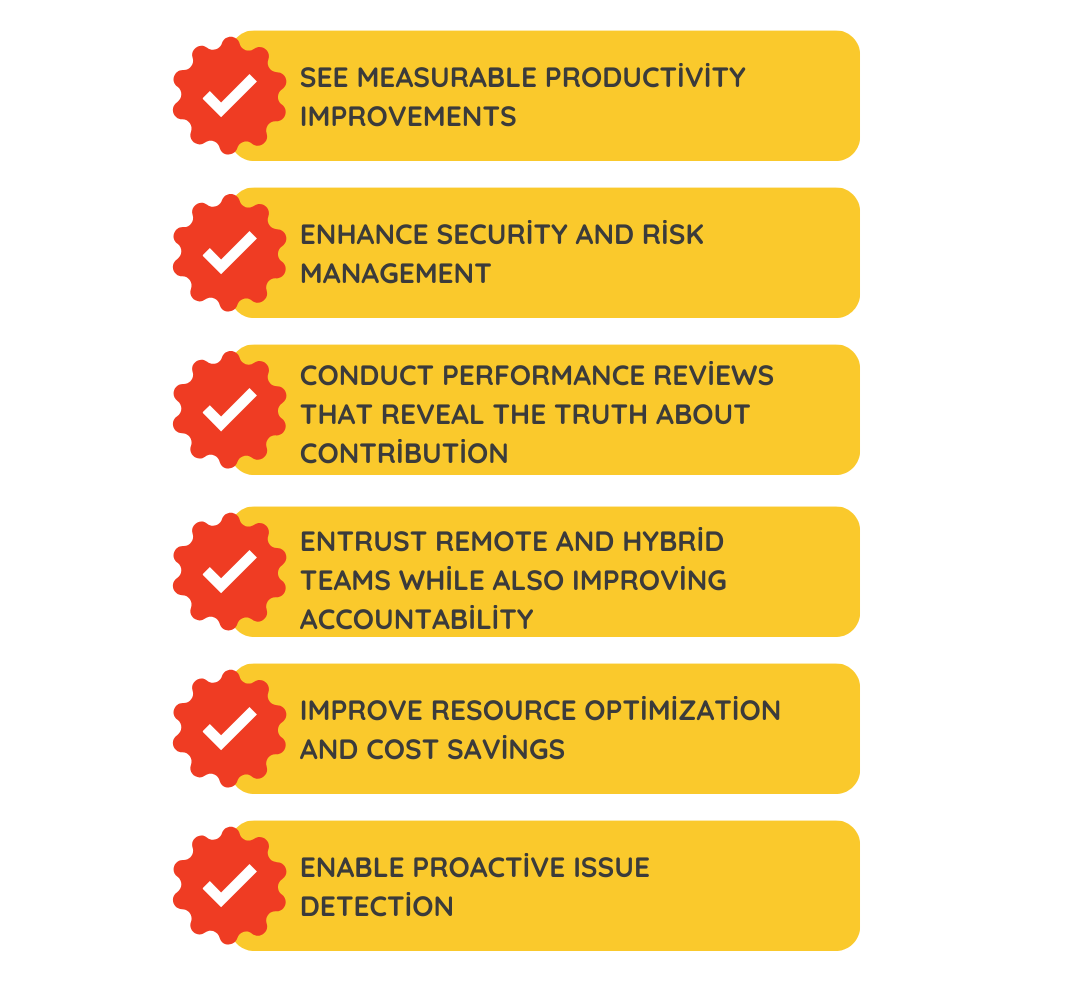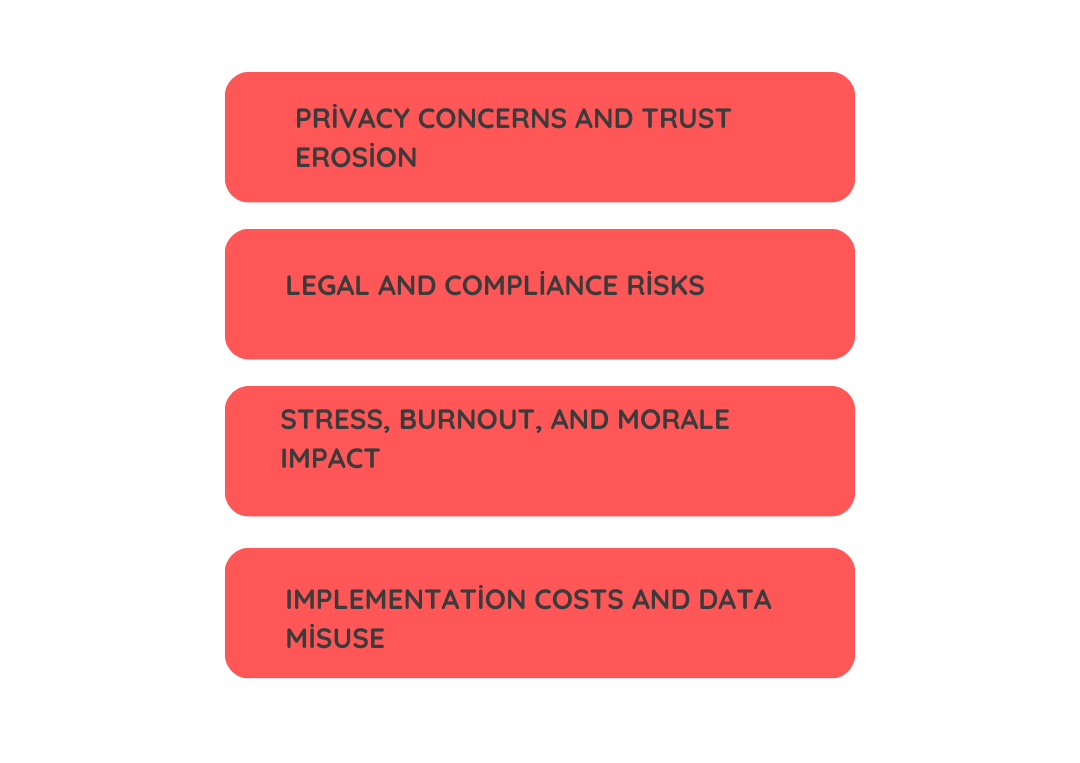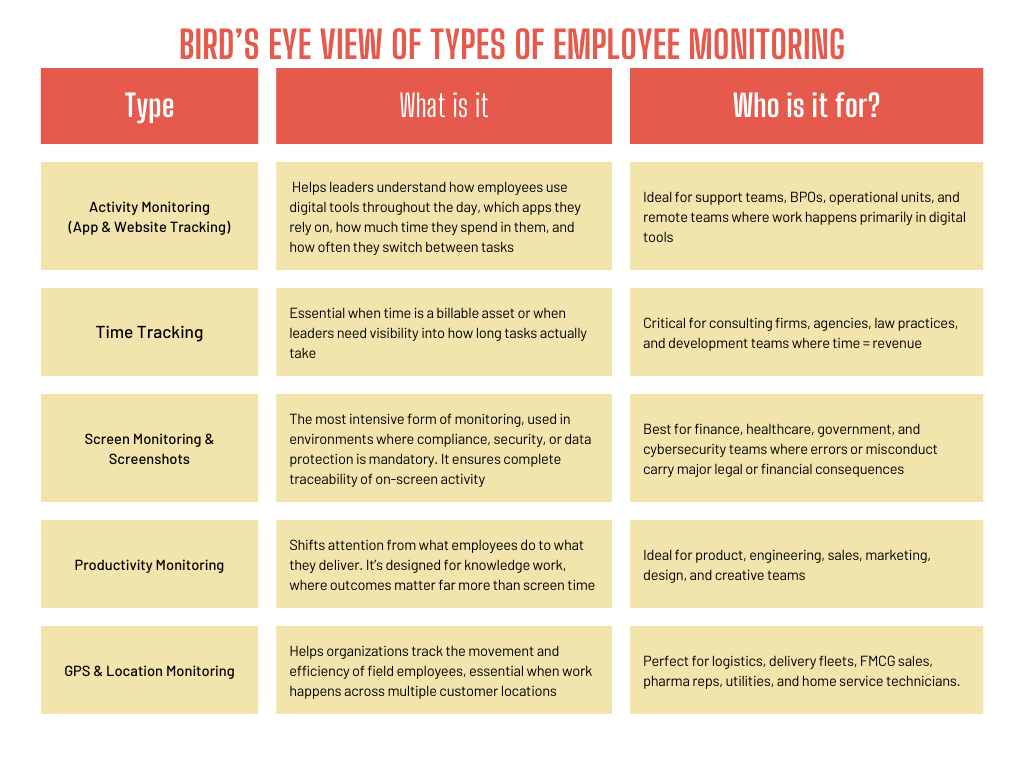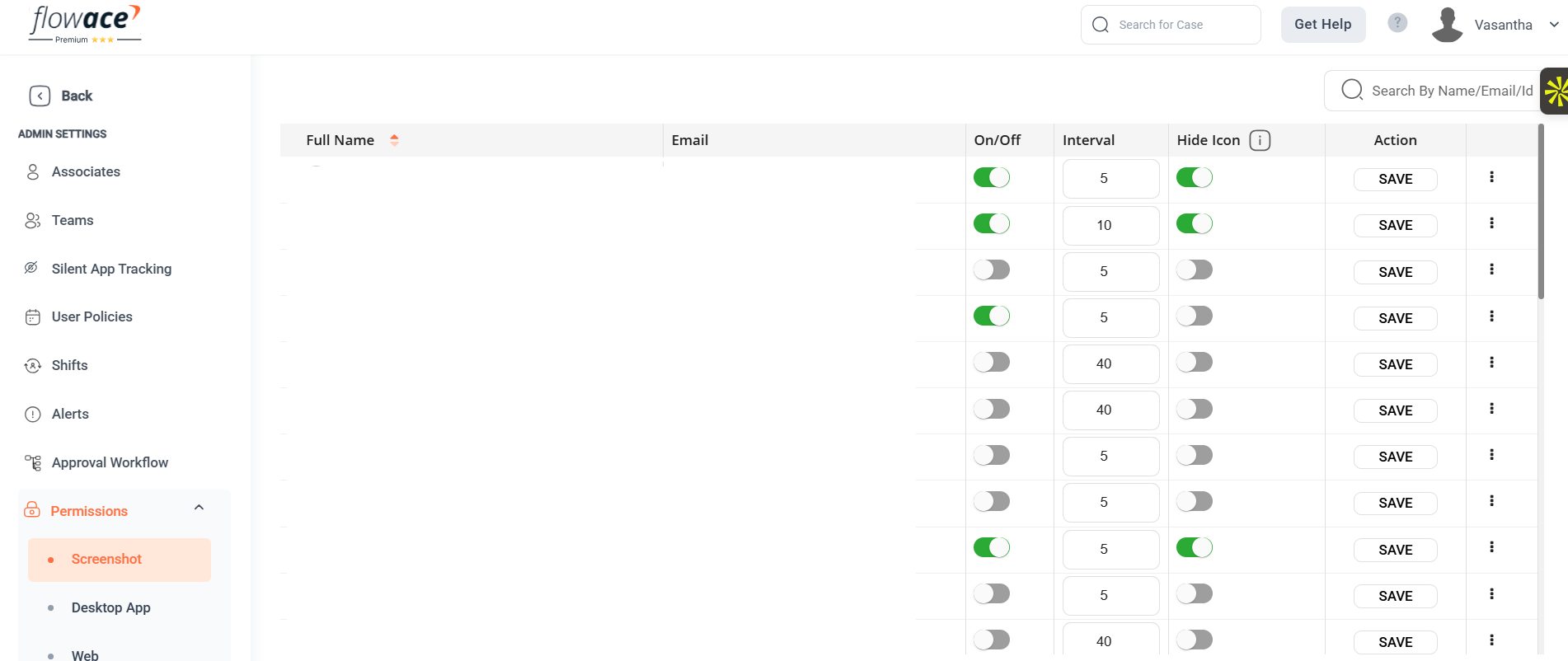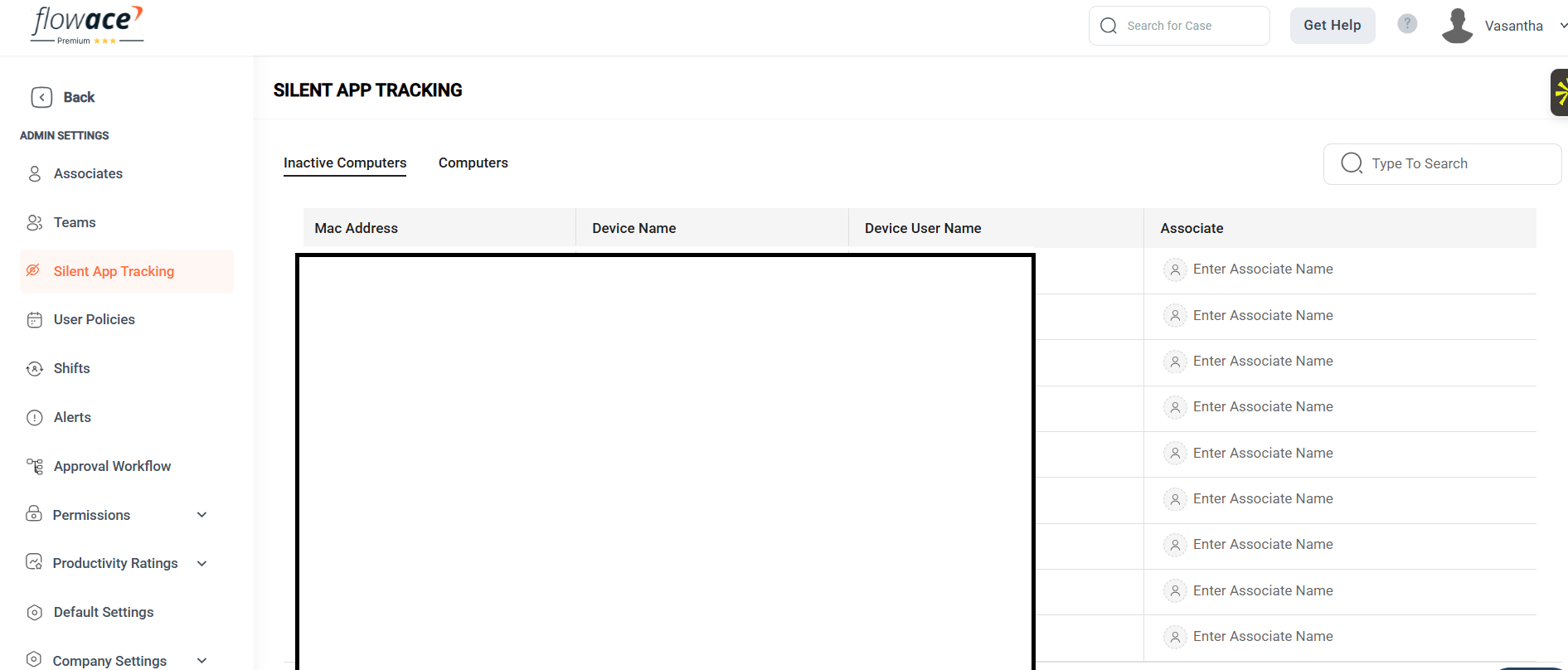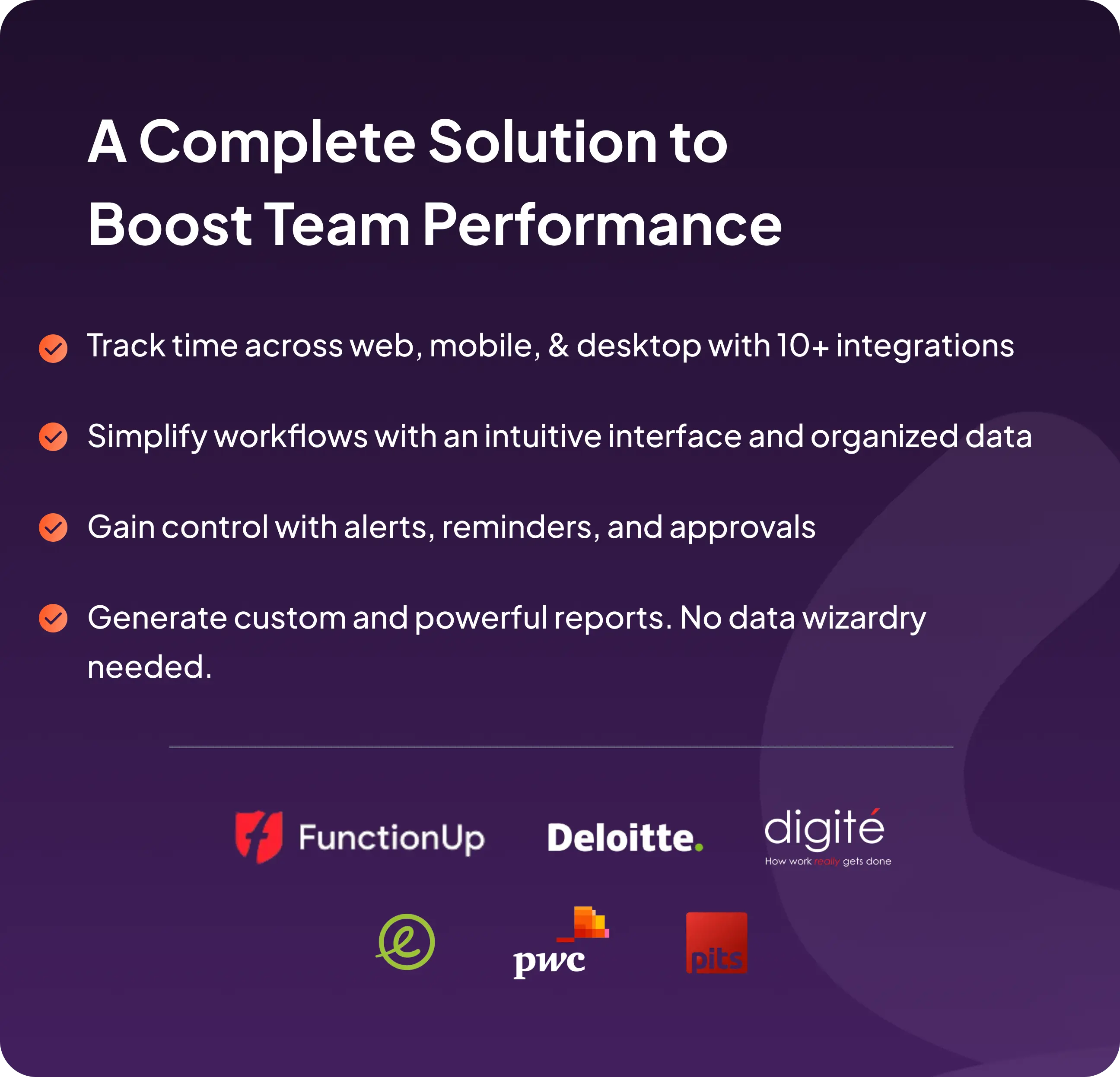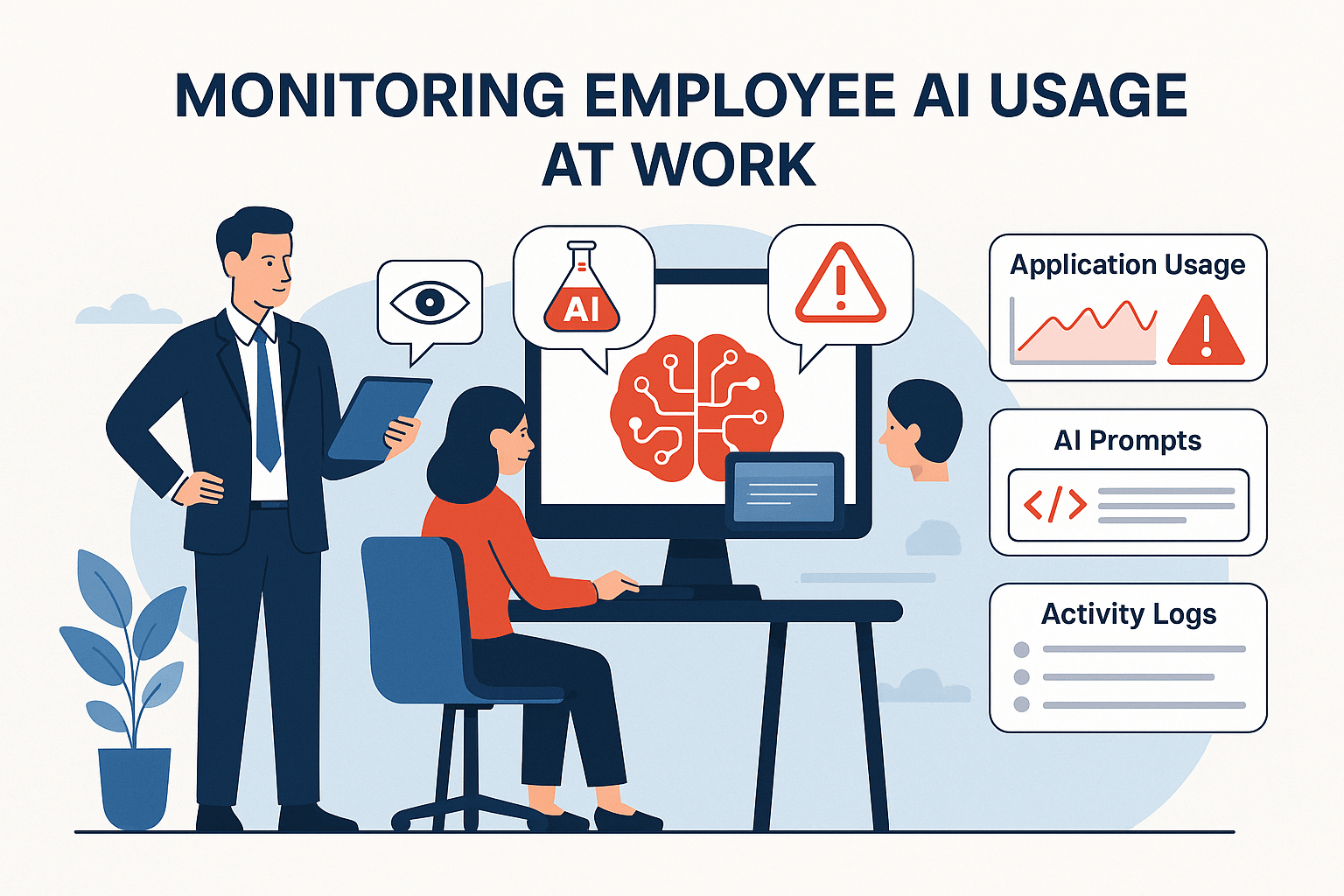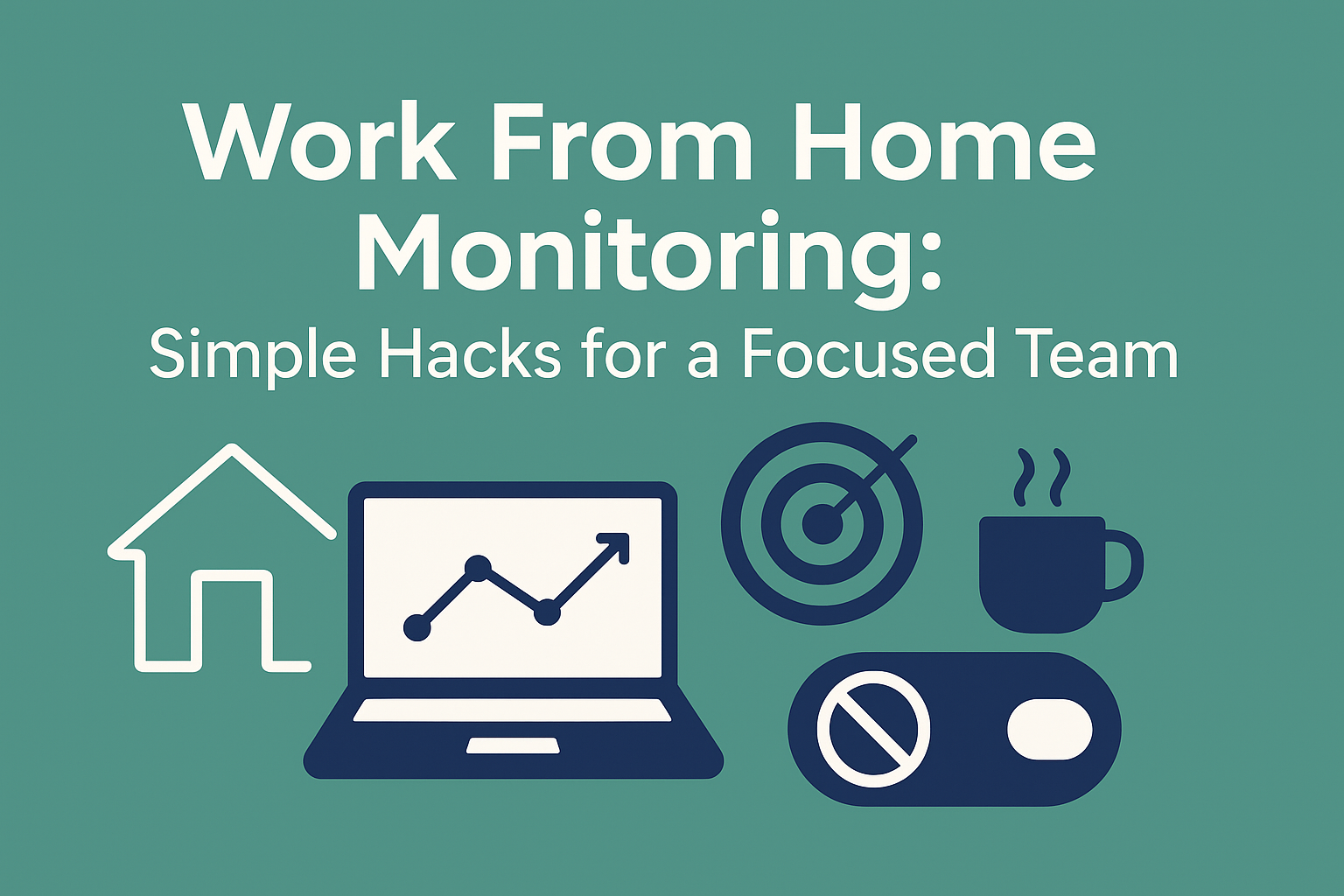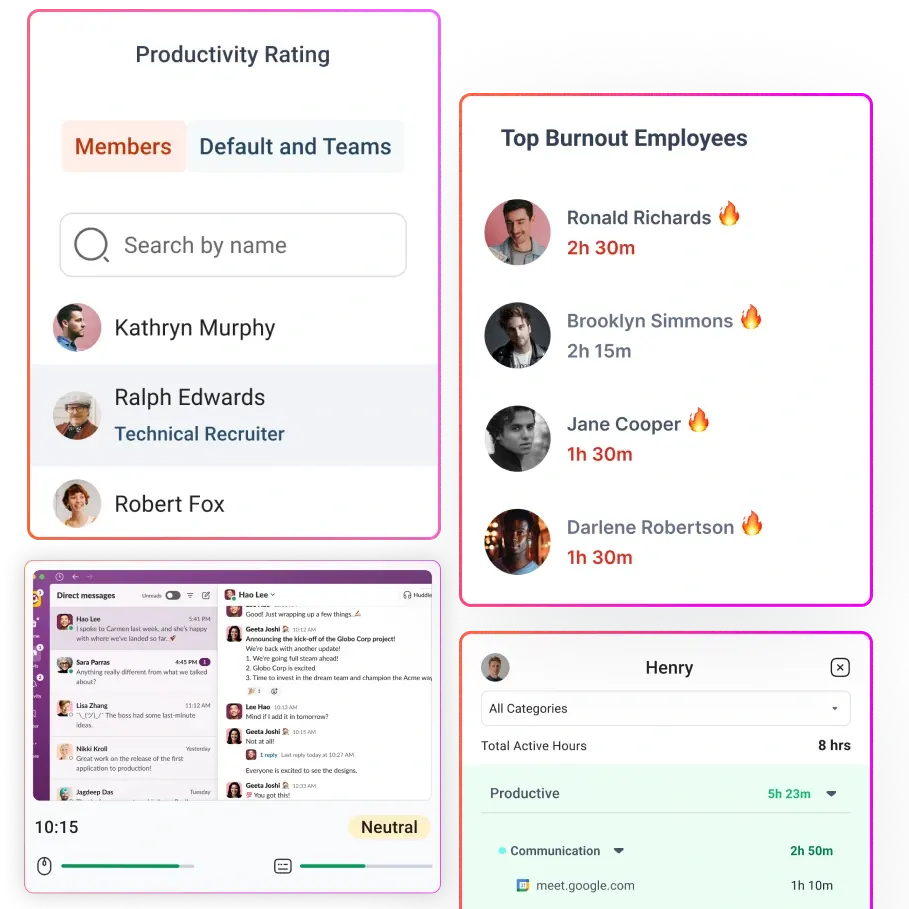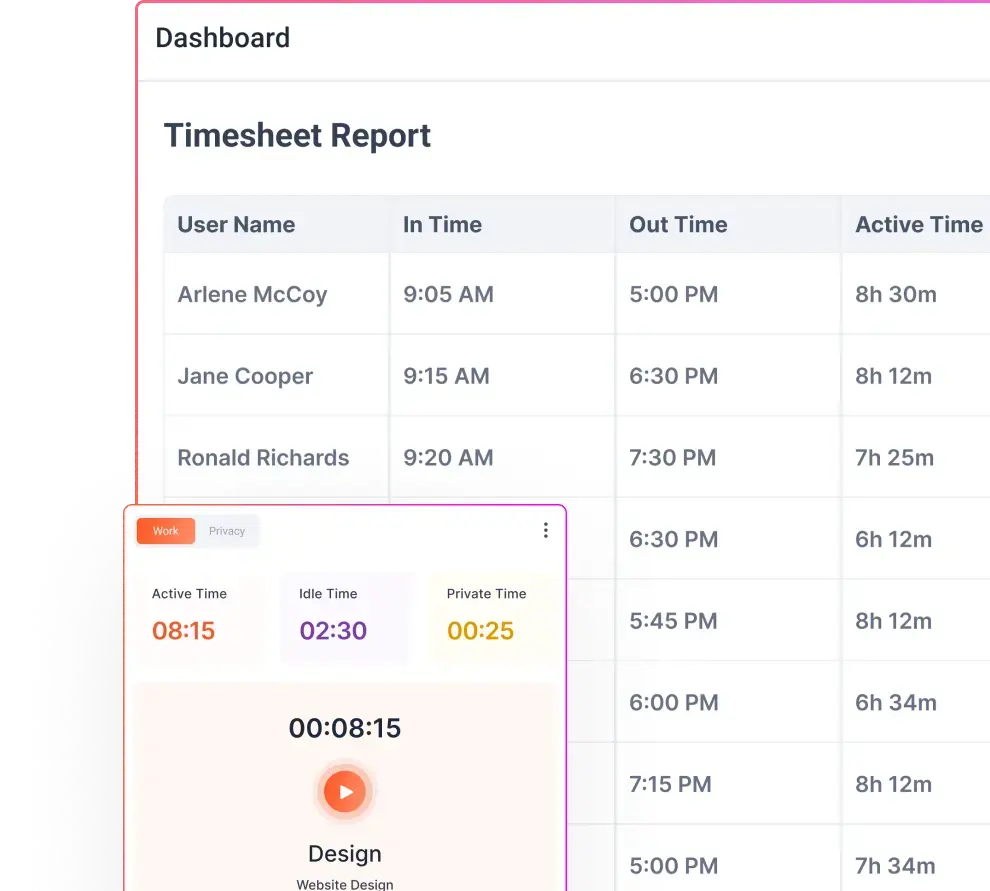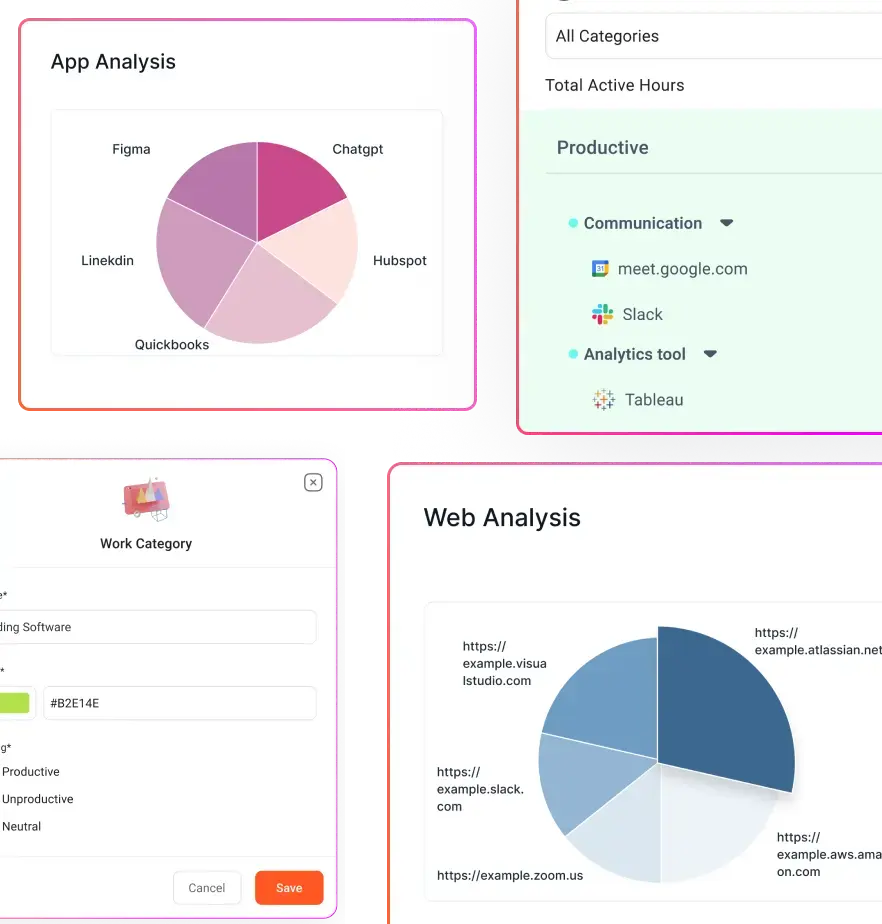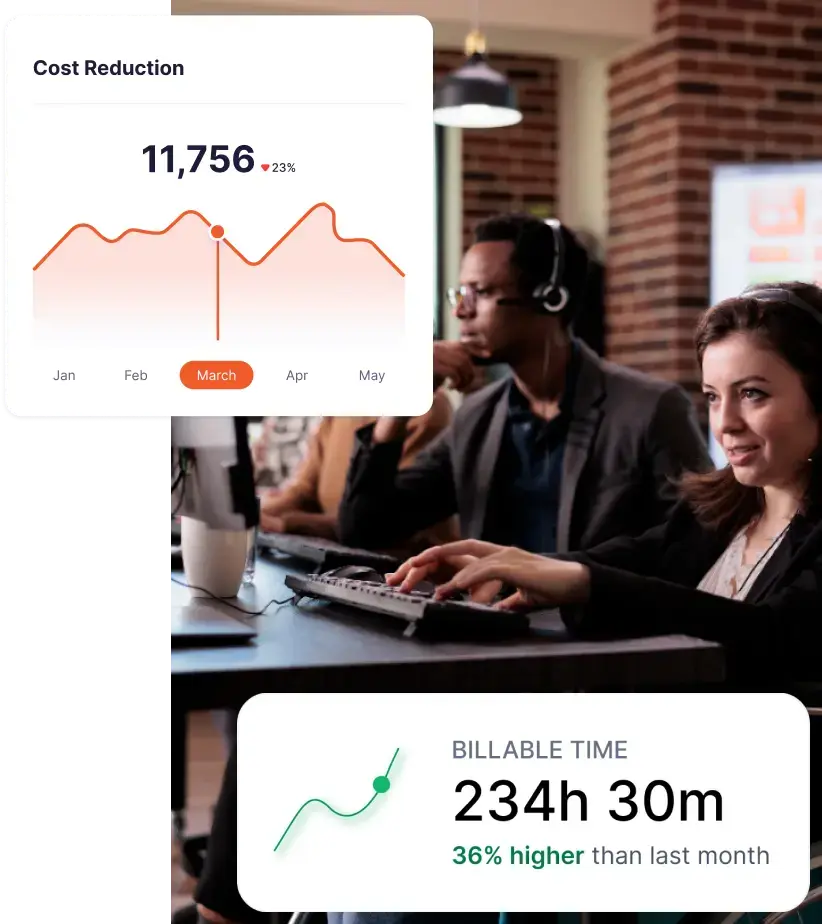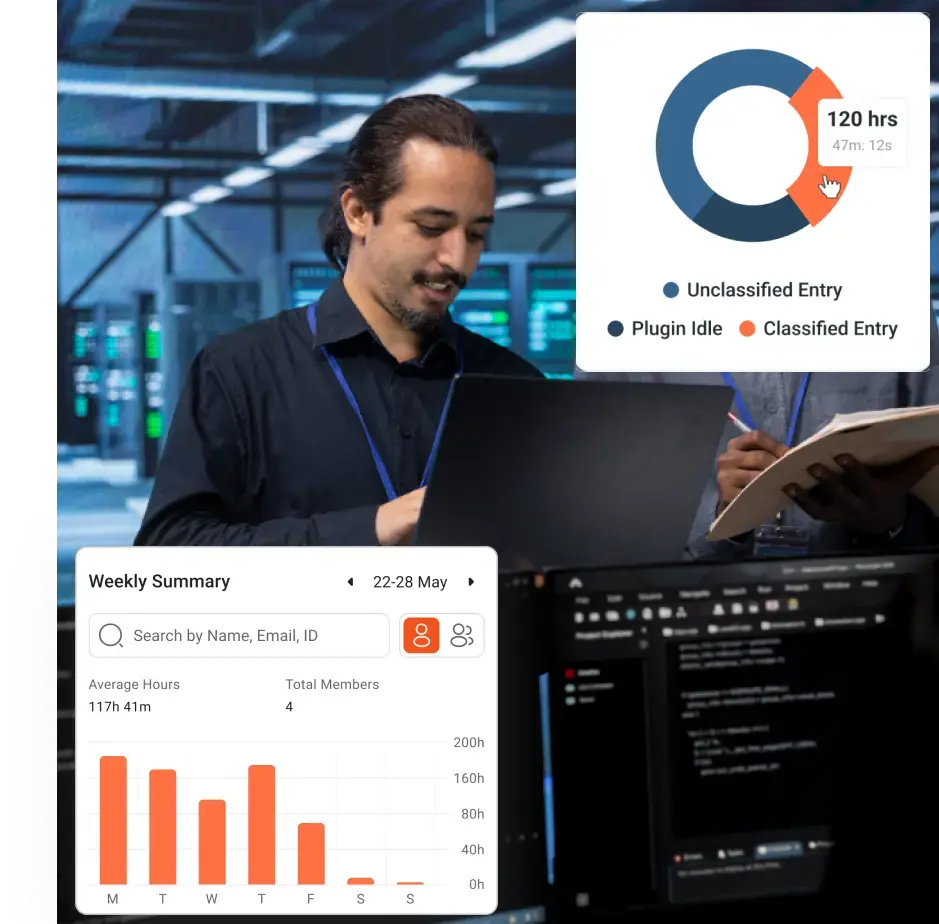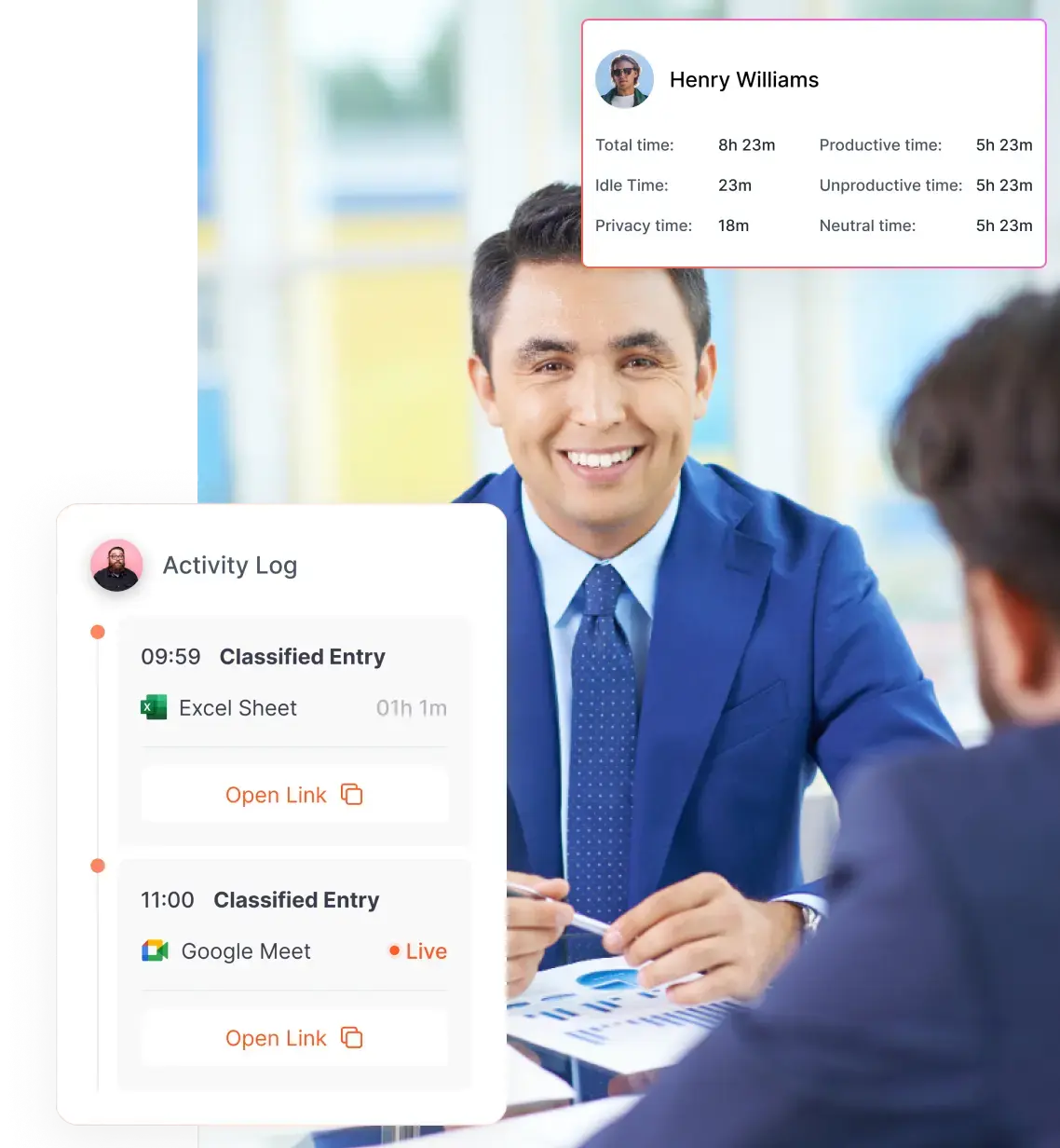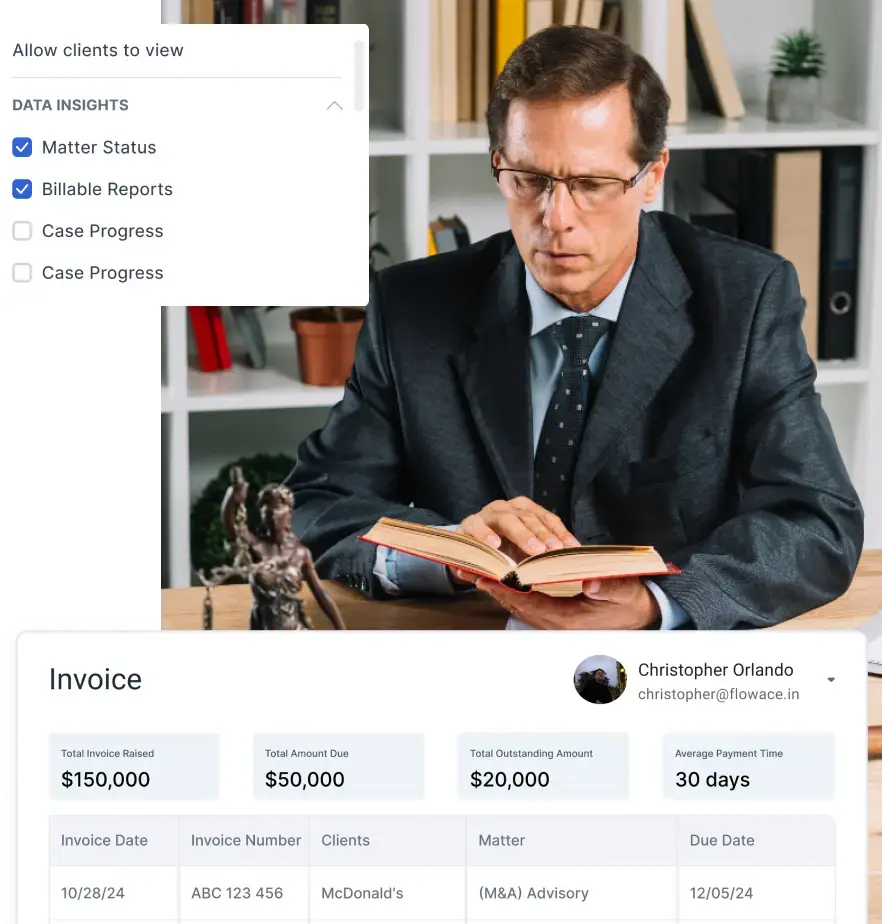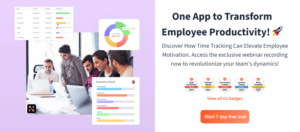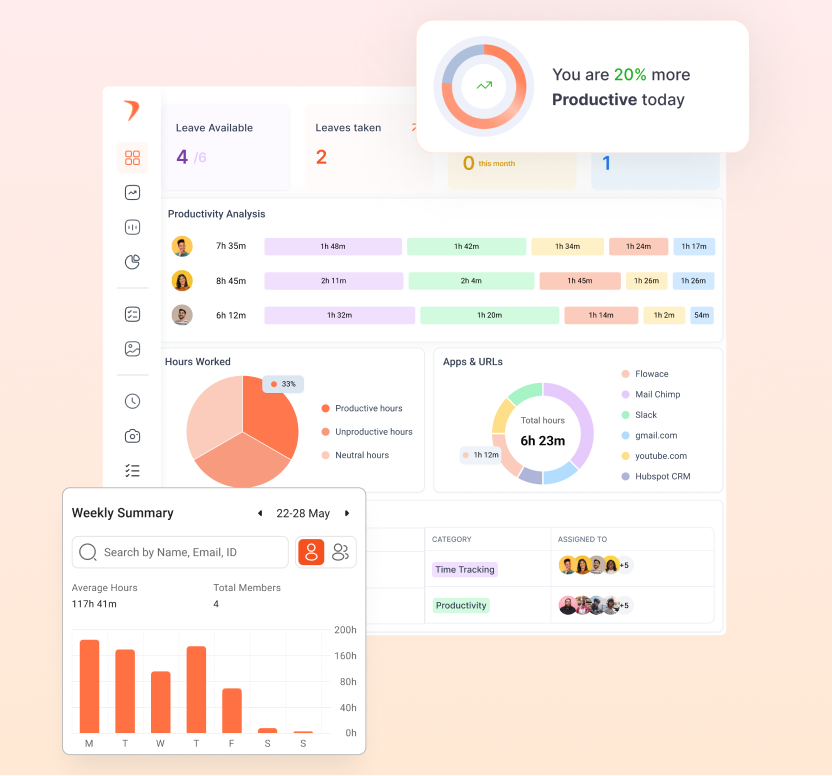“Do I actually have a clear picture of how work is unfolding each day?”
The moment you ask it, you realise how much the workplace has changed: hybrid schedules, scattered communication, shifting priorities, endless tools. Intuition alone no longer gives you the clarity you once had.
That’s when employee monitoring enters your thinking.
Not as a sign of distrust, but as a practical attempt to understand where time is being spent and what that effort is yielding. This is where the pros and cons of employee monitoring can keep you stuck in the same loop over and over again.
So if you’ve been stuck between following logic by adopting monitoring tools and following your heart by trusting your people entirely, this blog post is for you.
Who is this blog for?
- Founders, HR leaders, operations managers, and team leads who need clearer visibility into how work unfolds each day.
- You’re considering employee monitoring but want to implement it ethically, without harming trust
Key Takeaways:
- Monitoring works only when it’s transparent, done right, and it drives measurable productivity, security, and workflow clarity.
- Legality isn’t the barrier; secrecy is. Clear consent, purpose, and minimal data collection keep you compliant.
- The biggest risk is trust. Poor rollout breeds fear, stress, and cultural damage.
- Choose the right level of monitoring for your team, lightweight tracking for productivity, and deeper oversight only for compliance-critical roles.
- Privacy-first platforms like Flowace prove you can gain meaningful insights without crossing ethical lines.
Is Employee Monitoring the same as Surveillance?
Surveillance is about suspicion. It suggests hidden tracking, constant oversight, and a belief that employees need to be policed.
Employee monitoring, when implemented with intention, is about operational clarity. It gives leaders visibility into workflow patterns, bottlenecks, workload distribution, and process inefficiencies.
It answers practical questions:
- Where is time actually going?
- Are teams overloaded or underutilised?
- Which tasks drain bandwidth without adding value?
- Is work progressing at the pace the business requires?
The difference ultimately comes down to transparency and purpose. Surveillance assumes wrongdoing. Monitoring surfaces operational truth, and that’s the key difference.
Employee Monitoring: Quick Pros vs Cons Overview
Is It Even Legal to Monitor Your Employees?
Yes, employee monitoring is legal in most countries, but only when it’s done transparently, for a legitimate business purpose, and with respect for employee privacy. The law doesn’t prohibit monitoring; it restricts how it’s carried out.
Employers must clearly communicate what is being monitored, why it’s needed, and how the data will be used and protected. The biggest legal risks come from secrecy, excessive tracking, or collecting data unrelated to work.
| Region/Country | Is Monitoring Legal? | Key Requirements to Stay Compliant |
| United States | Yes | Varies by state; employees should be notified; monitoring must relate to business needs. |
| European Union (GDPR) | Yes, with strict limits | Clear purpose, data minimization, employee consent/notice, strong data protection measures. |
| United Kingdom | Yes | ICO guidelines require transparency, proportional monitoring, and documented justification. |
| India | Yes | Must follow privacy principles; employees must be informed; only collect work-relevant data. |
| Australia | Yes | Monitoring is allowed with written notice; different states have additional rules. |
| Canada | Yes, with limitations | Must be reasonable, necessary, and clearly communicated; stricter rules in some provinces. |
Key Advantages of Employee Monitoring
1. See Measurable Productivity Improvements
You know the scenario where a team reports their calendars are packed, the pace feels intense, yet throughput doesn’t reflect the effort. No single failure stands out, but the system is clearly underperforming.
Developmental, transparent, real-time employee monitoring gives leaders visibility into what the naked eye can’t detect: how time is actually spent, where workflow friction accumulates, and which operational patterns consistently undermine performance.
There’s a caveat here: employee monitoring alone doesn’t drastically improve productivity, but in places where the organization is vocal about tracking and clarifies the reason for it, performance blockers are genuinely identified and sorted out.
If your team is stuck in unnecessary meetings, you can push back. If they are in a manual task rut, you can convince leadership to bring in the right automation. You can intervene exactly where your team needs you.
| How Digite Achieved 21% Productivity with Flowace’s Employee Monitoring |
| Flowace helped Digite eliminate manual timesheets, automatically capturing work hours and categorizing tasks without any employee input.
This gave leaders instant visibility into how time was actually spent, removed hours of administrative overhead, and created 100% work transparency — ultimately improving productivity by 21%. |
2. Enhance Security and Risk Management
Security failures rarely start with a dramatic breach; they begin with small, easily overlooked actions: an unauthorized download, unusual login behavior, a file transferred at the wrong time. For operational leaders responsible for protecting systems and customer trust, these blind spots pose a significant risk.
Instances like the Coinbase data breach make the case for monitoring employee activity closely.
Employee monitoring adds a vital layer of security. Up to 78% of large enterprises now use behavioral monitoring to identify suspicious activity.
Monitoring platforms act as an early-warning system. They can flag unusual patterns immediately, such as attempts to copy large datasets, access restricted systems, or transfer sensitive information outside approved channels.
Also, monitoring provides a verifiable trail of actions tied to sensitive workflows, supporting requirements under GDPR, HIPAA, SOX, PCI-DSS, and similar frameworks.
3. Conduct Performance Reviews That Reveal the Truth About Contribution
With objective metrics like hours logged on key projects, tasks completed, and operational focus patterns, managers can identify who is consistently delivering results and who may need targeted support.
This data helps ensure that top performers, including those whose work isn’t always visible in team meetings, get recognition because their actual contribution shows up clearly in the system.
Similarly, trends revealing missed deadlines, workflow bottlenecks, or skill gaps help leaders deliver coaching before issues escalate.
| How Do You Identify Invisible Work That Goes Behind the Scenes? |
| Invisible work is when someone extends to work on after-hours troubleshooting on critical deliverables or on high-priority client tasks, stretches to help a colleague in an important meeting, presentation, or goes above and beyond and attends lead meetings on holidays and leave days.
The employee might not track this manually when they are already extending, but if your system does, you get to know who your real stars are. Before we proceed, how do you track invisible work that goes on? |
4. Entrust Remote and Hybrid Teams While Also Improving Accountability
Research from Stanford University shows that hybrid and remote work models can sustain or even boost productivity.
For example, a Stanford-led hybrid study found no measurable drop in productivity for employees splitting time between home and office, while other experiments have documented productivity increases of up to 13% for remote work arrangements under certain conditions.
That said, making sure your employees are doing their absolute best while you entrust them with working from home is crucial.
When monitoring is implemented thoughtfully, it becomes a shared language of work:
Remote employees can self-report progress with confidence because the data validates their contributions rather than leaving them dependent on recall or last-minute status updates.
Managers gain real visibility into execution, but the actual work being done, which enhances trust and reduces the need for constant check-ins.
Imagine a distributed product team working across four time zones. Traditional standups only capture yesterday’s work, and asynchronous blockers often go unreported until sprint reviews reveal them. With monitoring data in place, blockers show up in dashboards early, allowing leaders to intervene before deadlines slip and enabling teams to adjust workflows dynamically.
5. Improve Resource Optimization and Cost Savings
From an operational standpoint, one of the most consistent advantages of employee monitoring is the clarity it brings to how organizational resources are actually used, not how leaders think they’re used.
The biggest money wasters in this day and age are the unused licenses companies continue to pay for, in millions, every year, to subscriptions that are either redundant or outdated. Studies show that about 50% of software licenses sit idle, costing organizations significant money in wasted spend each month.
When it comes to human resources, monitoring shows you where workloads are lopsided, where capacity sits idle, and where talent is being underused or misplaced. Instead of relying on gut instinct, you finally see in concrete terms who’s carrying too much, who could take on more, and which roles you’re unintentionally filling with expensive contractors when your own people already have the bandwidth.
Because the data highlights patterns you’d never catch about resource optimization and alignment (based on Deloitte’s 2025 Human Capital Report), you can step in early, rebalance your teams, and redirect hours toward the high-impact work your business actually depends on.
And once you start making decisions with this level of clarity, the financial benefits compound fast.
6. Enable Proactive Issue Detection
Small problems never stay small. Issues don’t erupt suddenly; they build quietly, where no one is looking.
Employee monitoring shines a light into those blind spots. It surfaces early signals that something is slipping: rising overtime, dropping focus hours, or repeated rework. We’ve seen how devastating unnoticed issues can be.
| Did You Know Crowdstrike’s Major Outage Was Because of Process-Related Issues? |
| A flawed software update from CrowdStrike, caused by inadequate internal quality control processes, triggered a massive IT outage that affected millions of Windows computers around the world. The outage disrupted business operations across industries and is estimated to cost affected companies billions of dollars in losses. |
That’s why proactive detection matters.
Employee monitoring becomes your early-warning radar, flagging process breakdowns, workload imbalances, burnout patterns, and unusual productivity drops before they escalate.
Proactive monitoring shifts you from firefighting to preventative operational intelligence. You see the smoke long before the fire.
You protect your teams, your delivery timelines, and your organization from avoidable crises. Once you map what your people do, when, where, and for whom, you get a solid chance at protecting your company and its processes.
Key Challenges of Employee Monitoring
1. Privacy Concerns and Trust Erosion
When employees feel watched rather than supported, monitoring becomes a cultural liability. If leaders don’t communicate clearly, people begin to wonder, “Am I under suspicion?” or “Is every idle minute being judged?” That anxiety chips away at confidence and psychological safety.
Slack’s Future of Work research, surveying over 10,000 desk workers globally, found that more than one in four employees say they don’t feel trusted by their employer — and those who do feel trusted report far better outcomes across the board.
When people suspect monitoring is punitive or opaque, that sense of distrust undermines productivity, engagement, and long-term retention. Leaders can counterbalance this by communicating the purpose of monitoring clearly, focusing on support, workflow clarity, and career enablement rather than oversight.
When employees understand why data is collected and how it connects to things like workload balance and removing blockers, monitoring becomes a shared performance tool rather than a source of suspicion.
2. Legal and Compliance Risks
Laws around employee monitoring vary widely. In the U.S., for example, the Electronic Communications Privacy Act (ECPA) generally allows monitoring on company devices, but some states (like Connecticut and Delaware) do require written notice to employees.
In Europe, the GDPR sets strict rules: employers must justify any monitoring as necessary (for productivity or security) and must inform employees in advance about exactly what data is collected and why.
Canada’s PIPEDA similarly demands that employers collect only needed information and protect it.
Australia and many other regions have their own privacy laws (e.g., the Australian Privacy Act requires notice and consent for sensitive data.
But the challenge for leaders is recognizing that monitoring is a governance decision.
When companies over-collect, store data insecurely, or fail to provide adequate notice, they expose themselves to fines, lawsuits, and reputational damage. Some high-profile enforcement actions in Europe have already shown regulators’ willingness to penalize employers who monitor excessively or secretly.
3. Stress, Burnout, and Morale Impact
Even with consent, monitoring can inadvertently pressure employees. When every minute at the computer is tracked, some people feel they must constantly appear busy. This leads to skipping breaks, avoiding creative thinking time, or gaming the system.
Around 56% of monitored employees report feeling stressed and anxious, compared to 40% of non-monitored workers.
Such stress affects creativity and job satisfaction. Workplace surveillance may even seem like a solution for improving efficiency, but it’s clearly eroding trust and morale in some workplaces.
The human mind needs space to wander occasionally. Brainstorming or debugging may not look like constant activity, but it’s productive work. Overly rigid monitoring can make employees work mechanically or hide their best thinking.
That’s why monitoring should support employees by alerting managers to overwork or by objectively highlighting accomplishments.
4. Implementation Costs and Data Misuse
Setting up a monitoring program isn’t free or automatic. There are real costs and overhead. Companies often underestimate the effort to integrate employee monitoring tools, train managers and staff, and analyze the data.
Besides software licensing fees, someone on the team needs to regularly review reports, address exceptions, and refine the process. If a company tracks everything but never reviews the findings, the data becomes noise.
Worse, some organizations misuse data. For example, firing someone over a single slip instead of helping them improve. To avoid this, focus on the biggest opportunities for improvement and keep the process lean. Otherwise, the costs (financial and cultural) can outweigh the benefits.
Now That You Know the Pros and Cons of Employee Monitoring, Let’s Look at What Type of Employee Monitoring Suits You
It’s a spectrum of tools and approaches, each one offering a different lens into how work unfolds. Some are light-touch and operational. Others are more detailed and data-heavy. And the right approach depends entirely on why you’re monitoring and what kind of work your teams do.
Below are the most common types, told through scenarios leaders actually encounter, along with their pros, cons, and the environments where each type truly shines.
1. Activity Monitoring (App & Website Tracking)
User activity monitoring helps leaders understand how employees use digital tools throughout the day, which apps they rely on, how much time they spend in them, and how often they switch between tasks. It uncovers patterns that influence productivity, from distraction habits to workflow friction.
How It Works
A lightweight background agent tracks the apps and websites employees interact with and classifies them as “productive,” “neutral,” or “unproductive” based on the employee’s role. It records active time, idle time, and context switching, creating a clear picture of how work actually flows. Instead of content, it captures trends, helping leaders see where digital time goes and where work slows down.
Pros
- Clarifies digital behavior and workflow patterns
- Reduces inefficiencies like constant multitasking
- Highlights tool-related blockers and gaps
Cons
- May feel intrusive if not explained well
- High activity ≠ , high output
- Requires thoughtful interpretation
Who It’s Best For
Ideal for support teams, BPOs, operational units, and remote teams where work happens primarily in digital tools. It helps fast-scaling companies diagnose productivity drops, reveal tool overload, and spot training needs early.
2. Time Tracking
Time tracking is essential when time is a billable asset or when leaders need visibility into how long tasks actually take. It replaces guesswork with real data on effort distribution across clients, projects, and internal work.
How It Works
Manual time tracking asks employees to log hours via timers or timesheets. Automated time tracking maps app and task usage to projects, categorizing time without requiring constant input. Integrated systems sync these logs to project tools, enabling accurate billing, sprint planning, and workload forecasting.
Pros
- Improves billing accuracy and project profitability
- Enables better sprint estimation and planning
- Helps prevent burnout with workload visibility
Cons
- Manual logging is tedious
- Automation can mislabel tasks
- Risks of overemphasis on hours over outcomes
Who It’s Useful For
Critical for consulting firms, agencies, law practices, and development teams where time = revenue. Also helpful for internal teams (HR, finance, ops) to identify hidden workloads and improve resource planning.
| Read Also: Why Investing in Employee Productivity Tools Matters? |
3. Screen Monitoring & Screenshots
Screen monitoring is the most intensive form of monitoring, used in environments where compliance, security, or data protection is mandatory. It ensures complete traceability of on-screen activity.
How It Works
Tools capture periodic screenshots or record sessions, sometimes triggered by sensitive actions. All data is encrypted and accessible only to compliance or security personnel. For regulated industries, screenshots serve as proof that employees followed correct procedures and handled sensitive information properly.
| Read Also: How Does Screenshot Monitoring Tool Work and Why is it Important? |
Pros
- Ensures compliance in regulated industries
- Provides clear, irrefutable audit trails
- Deters insider threats
Cons
- Highly intrusive
- Can damage culture if misapplied
- Requires strict security governance
Who It’s Useful For
Best for finance, healthcare, government, and cybersecurity teams where errors or misconduct carry major legal or financial consequences. Also useful for BPOs handling confidential client data and organizations needing proof of work for audits.
4. Productivity Monitoring (Output & Focus Metrics)
Productivity monitoring shifts attention from what employees do to what they deliver. It’s designed for knowledge work, where outcomes matter far more than screen time.
How It Works
The system integrates with work tools, project boards, CRMs, code repositories, ticketing systems, and tracks completed tasks, code commits, calls made, or campaigns delivered. It also measures focus time to show how much uninterrupted work employees get during the day.
Pros
- Focuses on outcomes, not activity
- Least intrusive method
- Supports deep work and autonomy
Cons
- Can hide blockers without context
- Requires strong KPIs
- Doesn’t reflect collaborative effort
Who It’s Useful For
Ideal for product, engineering, sales, marketing, design, and creative teams. Works well in hybrid environments and OKR-driven companies where impact, not presence, defines performance.
5. GPS & Location Monitoring
GPS monitoring helps organizations track the movement and efficiency of field employees, essential when work happens across multiple customer locations or territories.
How It Works
A GPS-enabled app records real-time location, routes taken, stops made, and time spent at job sites. Managers see a live map of field staff and can analyze route history, verify visits, and optimize travel patterns.
Pros
- Ensures route efficiency
- Verifies on-site work
- Improves ETA accuracy and customer service
Cons
- Sensitive without clear policies
- Must avoid tracking outside work hours
- Depends on device and connectivity
Who It’s Useful For
Perfect for logistics, delivery fleets, FMCG sales, pharma reps, utilities, and home service technicians. Also valuable for inspectors and auditors needing verifiable visit logs. It eliminates guesswork in field operations.
How Flowace Supports Ethical Monitoring
Most time tracking tools lean toward strict oversight, but Flowace is built for balance. It gives organizations the insights they need while protecting employee privacy, autonomy, and trust. It’s not just what’s tracked, but how and why.
Control Privacy to Give You Macro and Micro Insights
Flowace offers granular screenshot settings, including on/off toggles per user, adjustable intervals (e.g., every 5-10 minutes), and options to hide or show the tracking icon for awareness. Privacy Mode and BYOD safeguards limit monitoring to work-related activities during business hours, excluding personal apps and off-hours data. Screenshots auto-delete after 30 days to minimize data retention risks.
Built-In Compliance Features
Built-in consent prompts, audit trails, and role-based access controls help meet GDPR’s explicit consent rules and PIPEDA’s meaningful consent flexibility. Data minimization ensures only necessary metrics, like app usage, idle time, and activity levels, are collected, with encryption for secure storage. These align with ethical principles, avoiding overreach into private communications.
Advanced Tracking Options
Flowace provides Stealth and Interactive modes, letting teams opt for visible tracking icons or discreet operation to build trust. Keystroke logging and file activity monitoring detect insider threats without constant oversight, while app/URL categorization rates usage as productive or distracting. Meeting duration tracking across Zoom, Teams, Slack, and Skype adds workload context ethically.
Wellness and Alerts
Smart alerts notify managers of overwork, burnout risks, or insufficient breaks, promoting work-life balance proactively. Real-time dashboards offer live feeds of activity levels, idle time, and productivity scores for both managers and employees, encouraging self-improvement over punishment. Privacy Mode limits data collection to work hours and devices, with blurring options for screenshots.
Conclusion
You’re on the right track to want to know exactly where your team’s energy and efforts are going and to channel them into something better. Employee monitoring can definitely get you there. It’s about identifying the silent blockers your team could never articulate, uncovering the invisible effort your top performers give without asking for credit, and catching the small process failures before they snowball into losses.
But more than anything, it’s about trust.
The organisations that get this right don’t become more rigid. Instead, they become more human. Flowace was built for that version of work.
And your leadership begins with taking this step.
Discover how Flowace helps you strike the balance your workplace needs. Book your demo today, and make monitoring work for everyone. Can’t commit to a demo? Take a free 7-day trial instead.
FAQs:
What are the advantages and disadvantages of employee monitoring?
It improves productivity, strengthens data security, supports fair evaluations, and helps remote teams stay aligned. If done poorly, it can feel intrusive, harm morale, raise privacy concerns, and even create legal risks.
Is employee monitoring legal?
Yes, but it depends on your location. In the U.S., laws vary by state, while in the EU (under GDPR), strict consent and transparency are required. Canada and Australia also have privacy regulations. Always check your local laws and obtain proper consent.
How do you implement employee monitoring without harming trust?
Be transparent from the start. Share a clear policy, explain what’s being monitored and why, gather employee feedback, and use tools like Flowace that protect privacy while offering productivity insights. Monitoring should feel like support, not surveillance.
What are the risks of employee monitoring?
Employee monitoring can lead to privacy concerns and reduced trust if done without transparency. It may also cause stress or resentment among employees, affecting morale and engagement.
Related Articles
- Employee Monitoring: Complete Guide 2025
- How to Choose Employee Monitoring Software
- 9 Ways Employees Fool Monitoring Software
- Employee Monitoring Data Protection Guide
- How Employee Monitoring Software Works & Matters
- What is Employee Task Tracking? Complete Guide
- Best Employee Monitoring Software 2025
- Employee Idle Time Tracking Software Guide
- Employee Monitoring Best Practices 2025
- Employee Monitoring Laws: Legal Guide 2025
- Remote Team Monitoring: Perspectives & Insights
- Employee Monitoring Statistics 2025
- Performance Monitoring: Benefits & Concerns
- Employee Monitoring Myths Debunked
- Employee Wellbeing Monitoring Solutions
- Create Ethical Employee Monitoring Policy


